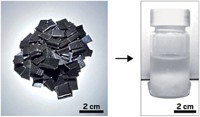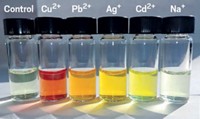Advertisement
Grab your lab coat. Let's get started
Welcome!
Welcome!
Create an account below to get 6 C&EN articles per month, receive newsletters and more - all free.
It seems this is your first time logging in online. Please enter the following information to continue.
As an ACS member you automatically get access to this site. All we need is few more details to create your reading experience.
Not you? Sign in with a different account.
Not you? Sign in with a different account.
ERROR 1
ERROR 1
ERROR 2
ERROR 2
ERROR 2
ERROR 2
ERROR 2
Password and Confirm password must match.
If you have an ACS member number, please enter it here so we can link this account to your membership. (optional)
ERROR 2
ACS values your privacy. By submitting your information, you are gaining access to C&EN and subscribing to our weekly newsletter. We use the information you provide to make your reading experience better, and we will never sell your data to third party members.
Materials
Repurposing Industrial By-products For Remediation
Sustainability: A polysulfide made from sulfur and limonene removes toxic palladium and mercury salts from soil and water
by Bethany Halford
November 2, 2015
| A version of this story appeared in
Volume 93, Issue 43
By combining by-products from the petrochemical and citrus industries, chemists have created a polysulfide that can remove certain toxic metals from water and soil. The material is made simply by mixing equal masses of sulfur and (+)-limonene without any solvent. Both sulfur and limonene are produced in abundance, with the petroleum refining process churning out more than 60 million tons of sulfur annually and the citrus industry extracting 70,000 tons of limonene from orange zest each year. Justin M. Chalker of Flinders University spearheaded work on the by-product-derived material. The polysulfide can be processed into a functional coating or molded into a solid form capable of removing toxic palladium(II) and mercury(II) salts from soil and water (Angew. Chem. Int. Ed. 2015, DOI: 10.1002/anie.201508708). When the material binds to a sufficient amount of mercury, it undergoes a color change from brown to yellow. This feature could be used to monitor the lifetime of remediation devices made from the polysulfide.





Join the conversation
Contact the reporter
Submit a Letter to the Editor for publication
Engage with us on Twitter